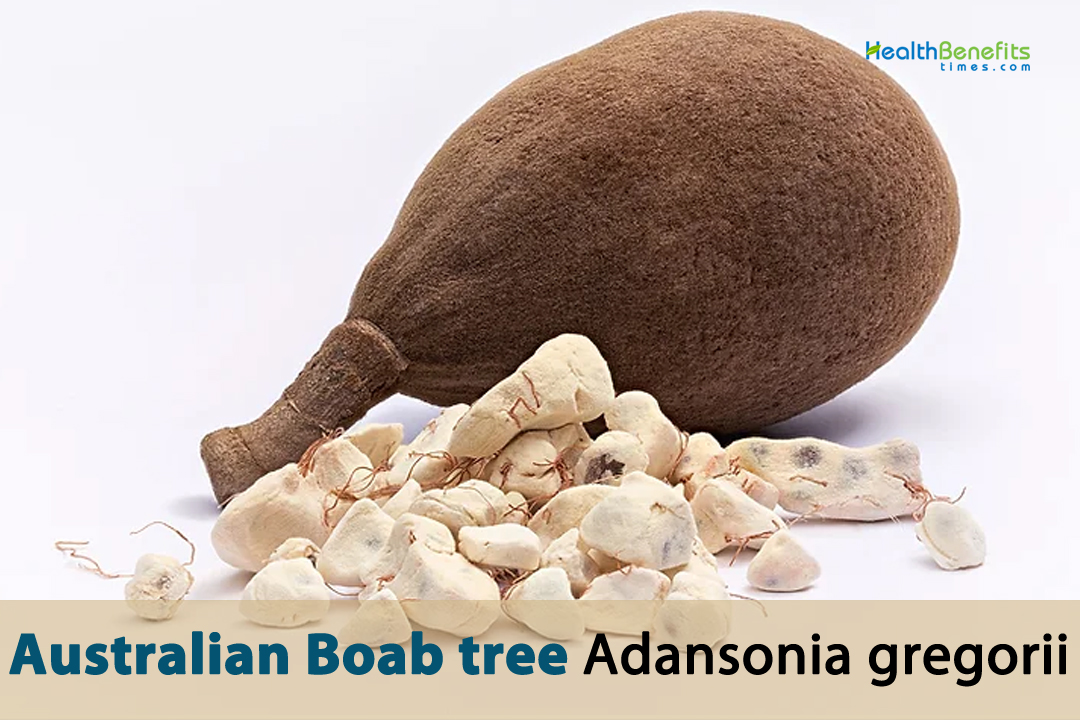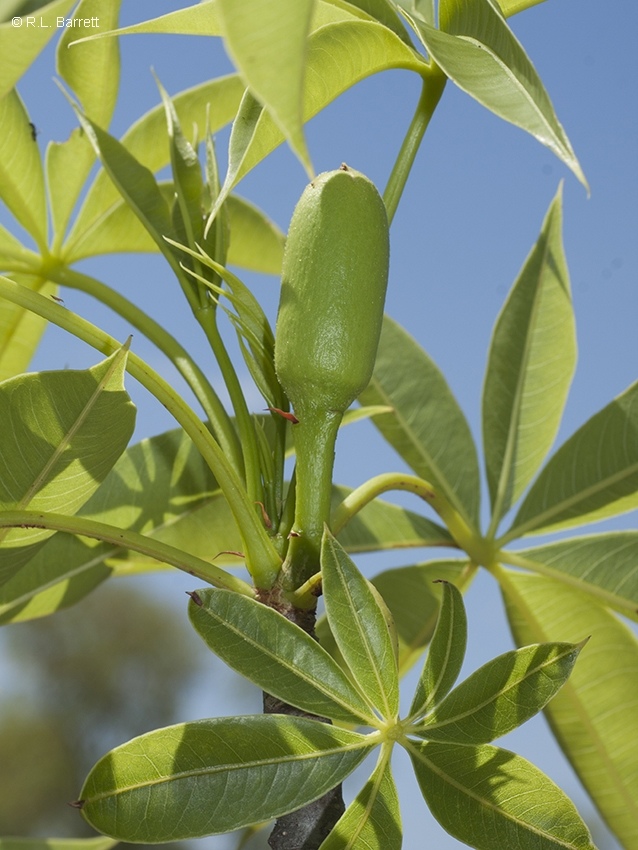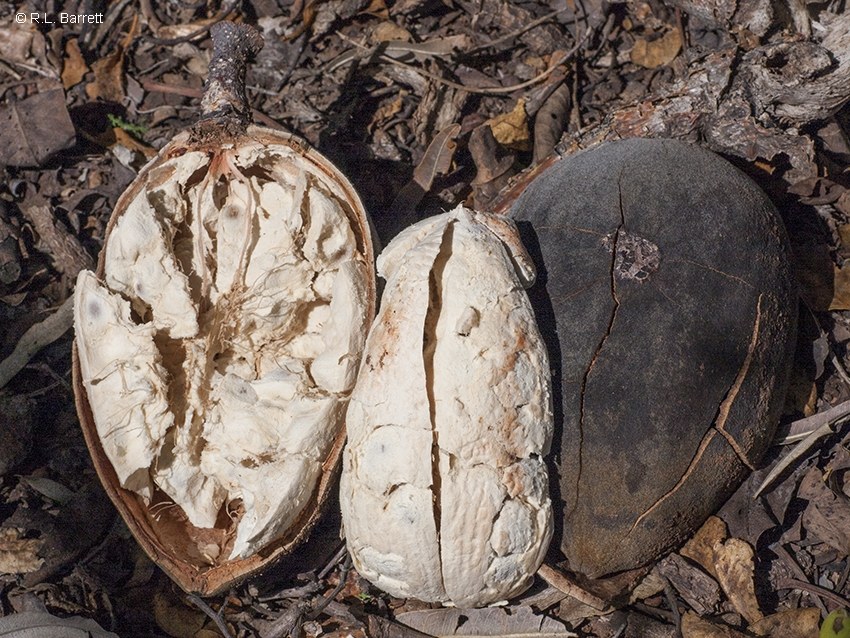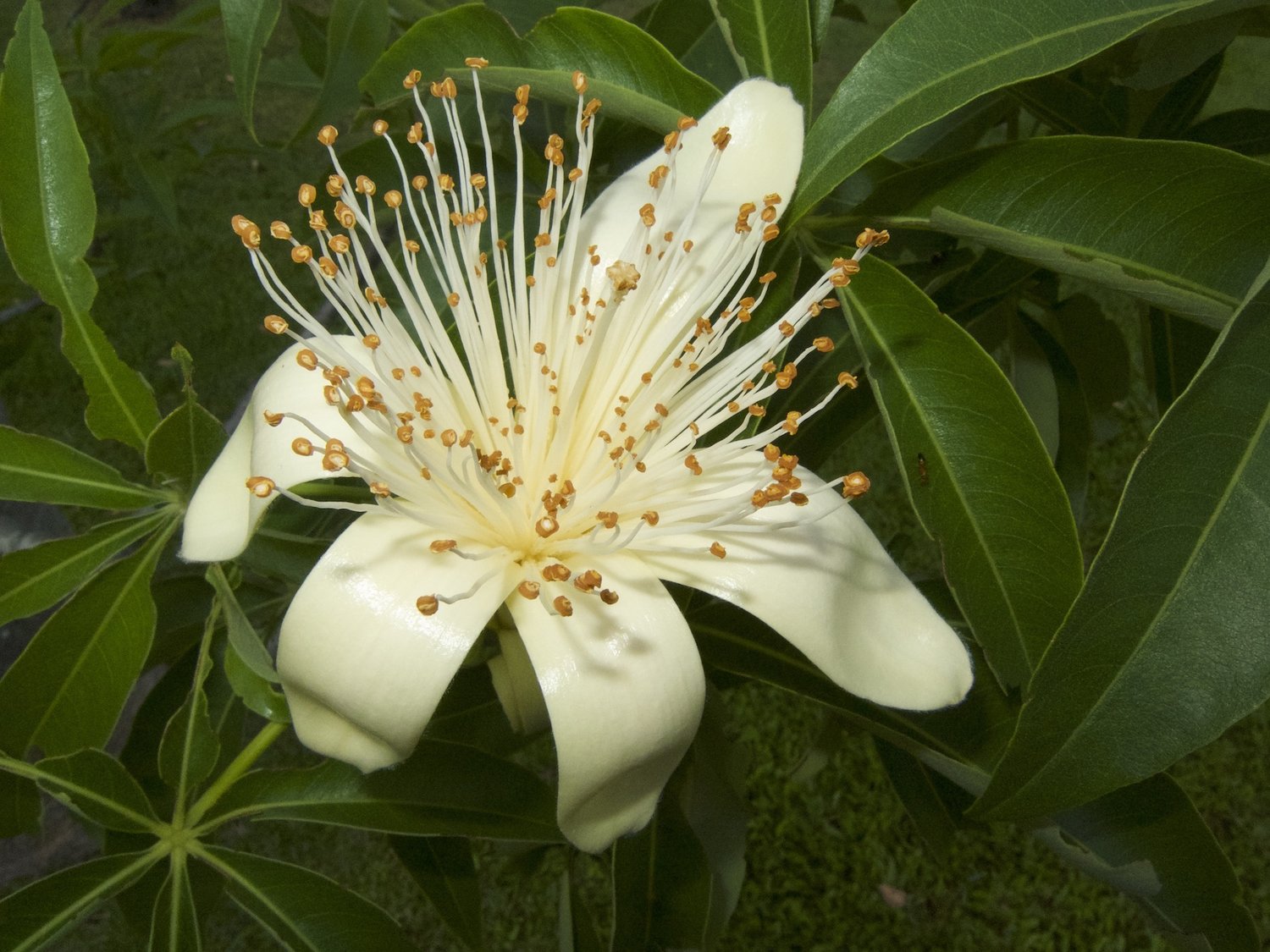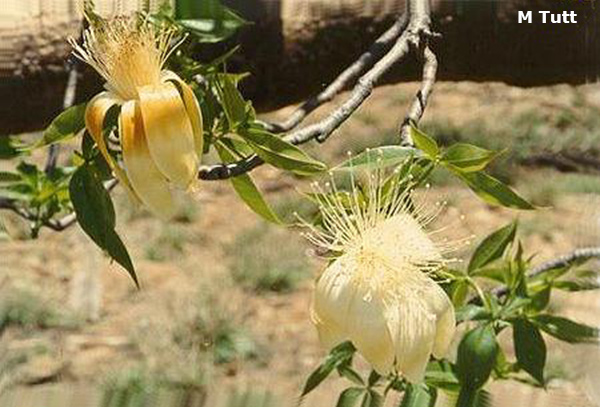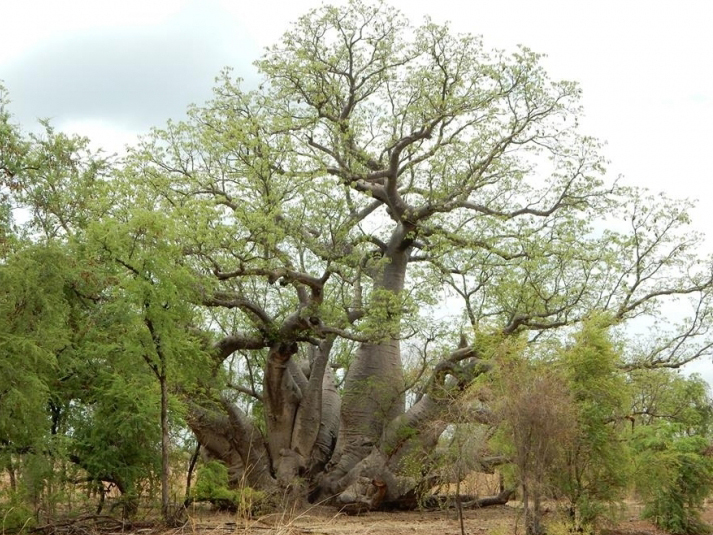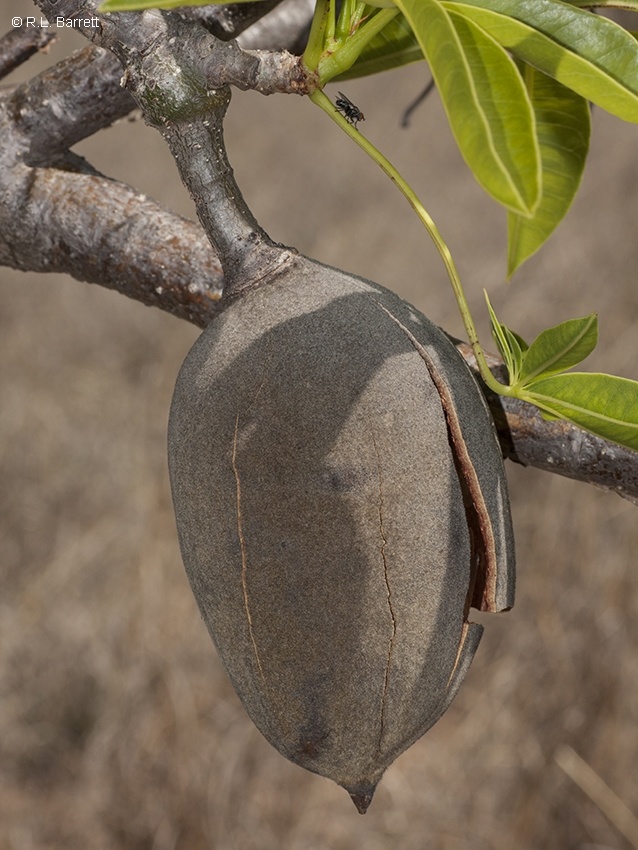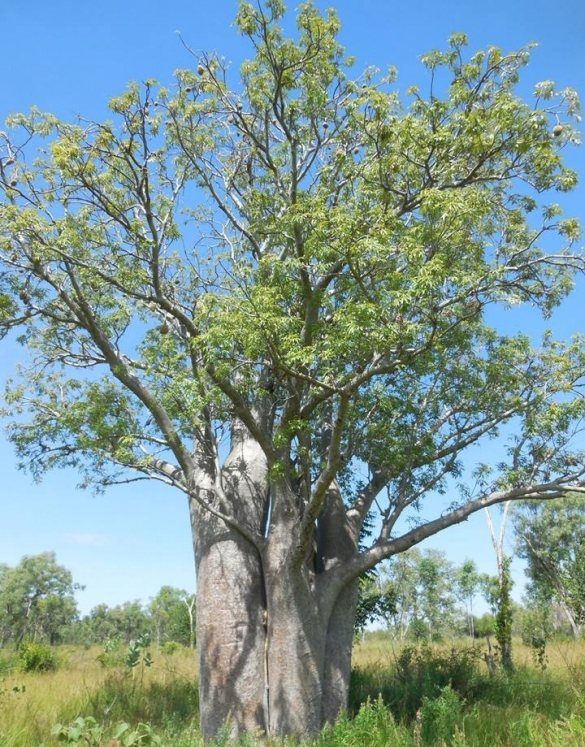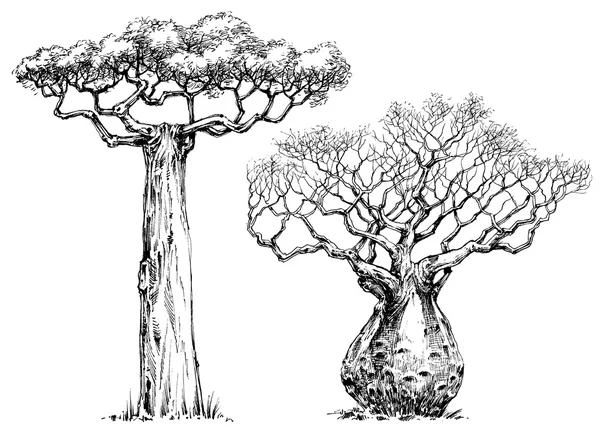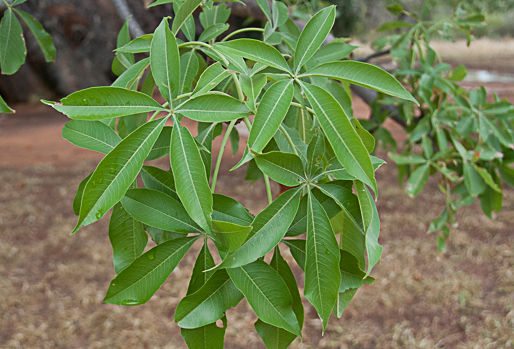The genus name “Adansonia” was given in honor of Michel Adanson, a French scientist and botanist who made important contributions to the study of African plants in the 18th century. He did a lot of study on baobab trees and other types of plants, which is how the genus got its name. The name “gregorii” is probably based on the name “Gregory” or comes from the Latin word “gregorius,” which means “watchful” or “vigilant.” But without more context or specific details, it’s hard to figure out where the name of this species came from. It stands out because its huge trunk is made like a bottle and is filled with soft, fibrous wood. This lets it store water. Some of the oldest and biggest trees can hold more than 100,000 L (22,000 imp gal; 26,000 US gal) of water in their stems. The seeds and veggies that can be eaten are picked from the wild and used locally. In Spain, the tree is grown on a large scale to make “Cream of Tartar.” It is sometimes grown as a tree for decoration.
Australian Boab Tree Facts
| Australian Boab tree Quick Facts | |
|---|---|
| Name: | Australian Boab tree |
| Scientific Name: | Adansonia gregorii |
| Origin | Northwestern Australia, in the Kimberley region of Western Australia |
| Colors | Initially green turning to dark or greyish |
| Shapes | Big, woody capsules about 10 to 20 centimetres long and about 10 to 15 centimetres wide |
| Taste | Both tart and slightly sweet (Fruit) |
| Health benefits | Digestive Health, Skin Health, Weight Management, Cardiovascular Health, Blood Sugar Regulation, Bone Density, Gut Health, Stress Reduction, Liver Health, Vision Support, Respiratory Health, Menstrual Health, Hair and Scalp Health |
| Name | Australian Boab tree |
|---|---|
| Scientific Name | Adansonia gregorii |
| Native | Northwestern Australia, in the Kimberley region of Western Australia, from Broome eastward to the Fitzmaurice River region in the Northern Territory |
| Common Names | Boab tree, Baobab tree, Upside-down tree, Bottle tree, Monkey bread tree, Dead rat tree, Cream-of-tartar tree, Adansonia tree, Lemonade tree, Giant tree of Africa, African baobab, Australian boab, Sour Gourd, Queen of the Forest, Tree of Life, Village Pharmacy, Upside-down Baobab, Elephant Tree, Gorilla Bread Tree, Egyptian Bottle Tree, African Tree of Mystery, Renala, Kuka, Mbonga |
| Name in Other Languages | Afrikaans: Aapbroodboom, Boababboom, boab, Australiaanse kremetart Akan: Kuka Albanian: Druri i bukës së majmunëve, boab Amharic: Ye Baob Gabir (የባኦብ ግብር), boba (ቦባ) Angika: Boabab Gachh (बोबब गछ़) Arabic: Shajarat al-Bawbab (شجرة الباوباب), boab, tabaludi sakhri (تبلدي صخري) Armenian: Mayrerén (Մայրերեն), Mis Irar (Միս իրար), bobik (բոբիկ) Assamese: Bundor Khaboli (বুঁদৰ খাবলী), Boabab Gach (ববাব গাছ) Azerbaijani: Boab Bambara: N’dan Bengali: Baobab Gach (বাওবাব গাছ), Bundarer Ruti Gach (বুঁদরের রুটি গাছ), boab Berber: Aɣḍal Bhili: Boabab Jhaad (बोबब झाड) Bislama: Bao Bao Tre Bodo: Aamsa Baraag (आमसा बरागफ़), Boabab Thang (बोबब थांग) Bulgarian: Afrikansko dŭrvo khlyab (Африканско дърво хляб), boab Burmese: Bawbup Saing (ဘာဝုပတ် သစ်ပင်), Kyak Myaung A Myet Saing (ကြက်မြောင် အမြက်သပ်), boab Chamorro: Tresan Fina’tinas Chhattisgarhi: Boabai Vriksh (बॉबैब वृक्ष) Chinese: Hóu Miànbāo Shù (猴面包树), Bào bó (鲍勃), Àozhōu hóu miànbāo shù (澳洲猴面包树) Croatian: Afričko drvo kruha, boab Czech: Strom opice chlebové, boab Danish: Abebrøndstræ, boab Dogri: Bundar Roti Da Rukh (ਬੁੰਦਰ ਰੋਟੀ ਦਾ ਰੁੱਖ), Baobab Rokh (باؤباب روخ) Dutch: Apenbroodboom, boab, Australische baobab English: Sour Gourd, Gourd-gourd Tree, Cream of Tartar Tree, Monkey Bread Tree, Upside Down Tree, Boabab, Baob Tree, Gouty Stem Tree, Gourd Tree, Australian Baobab, Boab, Baobab, Gadawon, Dead Rat Tree, Bottle Tree, Boab Baobab, Baobab bottletree, Baobab-tree, Gouty-stem Esperanto: Boab Estonian: Ahvileivapuu, boab, Gregori ahvileivapuu Fijian: Vesi Baobab Filipino: Punong Baobab, Punong Tinapay ng Unggoy, boab Finnish: Apinaleipäpuu, boab French: Arbre de Baobab, boab, Adansonie d’Australie, Baobab d’ Australie Fula: Lomgu Garhwali: Boabai Gachchh (बॉबैब गच्छ) Garo: Baobab Matchi Georgian: Baobabis Khe (ბაობაბის ხე), Namits’aris Khe (ნამიწარის ხე), Kolokolo (კოლოკოლო),babi (ბაბი) German: Affenbrotbaum, boab, Australischer Baobab Gondi: Boabab Kadai Greek: Déntro baómpab (Δέντρο μπαόμπαμπ), Dentro Karydiou (Δέντρο Καρυδιού), vrasmós (βρασμός) Guaraní: Arvore Mbóaba Gujarati: Beobab Vriksh (બેઓબાબ વૃક્ષ), Makakṛānī Roṭlī Vrikṣ (મકાકડ઼ાની રોટલી વૃક્ષ), Bōba (બોબ) Haryanvi: Boabab Jhaad (बोबब झाड़) Hausa: Ko Kon Mai Babban Aiki, kuka, boab Hawaiian: Kumu Ulumāheihei Hebrew: Ets Ha-Baobab (עץ הבאואבאב), Ets Ha-Lechem Shel Ha-Kof (עץ הלחם של הקוף), boab Hindi: Boab Vriksh (बोआब वृक्ष), boab (बोआब) Hungarian: Majomkenyérfa, boab Icelandic: Apabrúðartre, hrósa Igbo: Mkpụrụ Okụ, ukpa Indonesian: Pohon Baobab, Pohon Bubur Monyet, boab Irish: Crann Anama, boab Italian: Albero di Baobab, boab, Baobab australiano Japanese: Baobabu no Ki (バオバブの木), Baobabu no ki (バオバブの木), Boabu (ボアブ) Javanese: Nguyuh Kannada: Bōb (ಬೋಬ್) Kanuri: Kurna Karbi: Baobab Tunga Kashmiri: Bandar Dodh Darakht (بنڈر دودہ درخت), Baobab Drakht (باؤباب درخت) Kazakh: Bob (боб) Khasi: U Basa Khmer: Daeum Kom Pab (ដើរកំប៉ាប់), Prey Dau (ព្រៃដក) Kikongo: Mpombe Kokborok: Baobab Brikkh (বাওবাব বৃক্ষ) Konkani: Jivant Vruksh (जिवंत वृक्ष), Baobab Jhaad (बॉबॅब झाड) Korean: Baobab Namu (바오밥 나무), boab (보압) Korku: Baaobab Penu Kannada: Bābāb Mar (ಬಾಬಾಬ್ ಮರ), Elemukkina Mara (ಎಲೆಮುಕ್ಕಿನ ಮರ) Kumaoni: Boabai Gachchh (बॉबैब गच्छ) Kurdish: Sûşe Kurukh: Bohobab Johar Lao: Phāb Bāb (ພະບາບບາບ), Khob Meuang Bao (ຂອບເມືອງບໍ່), boab Latin: Moab et nomen urbis Latvian: Āfrikas zilonis maize, boba Lepcha: Khiuk Baobab Lingala: Lombole Lithuanian: Beždžionių duona, boba, Australinis baobabas Luganda: Mutuba Macedonian: Afrikansko drvo leb (Африканско дрво леб), brod (брод) Maithili: Bandar Ruṭī Peṛ (बंदर रुटी पेड़), Boabai Gachchh (बोबैब गच्छ) Malagasy: Boab Maori: Rākau Pakake Marathi: Baobab Jhad (बाओबाब झाड), Mākaḍāce Bhākar Jhāḍ (माकडाचे भाकर झाड), Ukaḷaṇē (उकळणे) Malay: Pokok Baobab, boab Malayalam: Bābab Maram (ബാബബ് മരം), Munthiri Pazha Maram (മുന്തിരി പഴം മരം), (Manushya Patram (മനുഷ്യപത്രം), bēāb (ബോബ്) Manipuri: Pumba Thi (পুম্বা থী), Baobab Gach (বাওবাব গাছ) Maltese: Boab Mongolian: Boov (боов) Nagamese Creole: Babab Shajat Nepali: Boab Rukh (बोआब रूख), Buddhimānko Roti Rukh (बुद्धिमानको रोटी रूख), bou (बोउ) Nihali: Bhaubhaab Vruksh Norwegian: Apebrødtre, boab Odia: Banari Ruṭi Gachha (ବନରି ରୁଟି ଗଛ), Baobabar Vriksha (ବାଓବାବର ବୃକ୍ଷ) Ongota: Kadaa Waaf Oromo: Duba Pashto: بوج Persian: Darakht-e Baobab (درخت بائوباب), Darakht-e Nān-e Mīmūn (درخت نان میمون) Polish: Drzewo małpki chlebowej, boab, baobab australijski Portuguese: Árvore do Baobá, boab Punjabi: Baobab De Rukh (ਬਾਓਬਾਬ ਦੇ ਰੁੱਖ), Budde Da Nan Bir (ਬੁੱਦੇ ਦਾ ਨਾਨ ਬੀਰ), Bō aba (ਬੋਅਬ) Quechua: Arbusto Wawawa Rajasthani: Boabab Rukh (बोबब रूख) Russian: Baobab (Баобаб), Boab (Боаб), Australijski baobab (Аустралијски баобаб) Romanian: Copacul pâinii de maimuță, boab Romanche: Tgierna da paun d’urmauns Samoan: La’au Baobab Sanskrit: Baobab Vriksha (बाओबाब वृक्ष) Santali: Boabab Johar (ᱥᱤᱱᱮᱤᱚᱢᱠᱚ ᱡᱟᱞᱟ) Scottish Gaelic: Craobh Bàbaib Serbian: Afričko drvo hleba (Афричко дрво хлеба), boab-ʙoaʙ (боаб-ʙoaʙ) Sesotho: Lekgophong Sherdukpen: Rongchab Gang Shona: Mubvumira Sikkimese: Boabo Sakyarigpa (བའོ་བའོ་སྐྱ་རིགས་པ།) Sindhi: Bandar Ji Boṭo (بندر جي ٻوٽو) Sinhala: Boabab Wasara (බෝබාබ් වසර), Vambāgayā Wasara (වම්භාගයේ වසර), bōb (බෝබ්) Slovak: Strom opice chlebové Slovenian: Afriško drevo kruha, boab Somali: Geedka Baobab Sora: Boabab Yenga Sotho: Sepe Spanish: Árbol de Baobab, boab Sundanese: Nguyup Swahili: Mti wa Baobabu, Mkate wa Nyani Swedish: Apbrödsträd, boab, Australisk baobab Tahitian: Aito Maohi Tajik: Bob (боб) Tamil: Pōp Maram (போப் மரம்), Cimiyāḷ Paza Maram (சிமியாள் பழம் மரம்), Pōp (போப்) Telugu: Bābab Chettu (బాబబ్ చెట్టు), Maṅgaḷaṁ Paṇḍu Cheṭṭu (మంగళం పండు చెట్టు), boab Thai: Ton Bābop (ต้นบาโบบ), Ton Pao Bop (ต้นเปาบอบ), boab Tigrinya: Bayobab (ባዮባብ) Tok Pisin: Baobab Diwai Tongan: Vao Faingofua Tswana: Mowana Tulu: Podava Mara (ಪೊಡವ ಮರ), Buvabu Mar Turkish: Maymun Ekmek Ağacı, tanrım, Avustralya baobabı Ukrainian: Baobab (Баобаб), Derevo Mavpochky Khlibnoyi (Дерево Мавпочки Хлібної) Upper Sorbian: Awstralski wopiči chlěbowc Urdu: Boabab Darakht (باؤباب درخت), Bandar Ki Roti Ka Darakht (بندر کی روٹی کا درخت) Uzbek: Boab Venda: Mutshundu Vietnamese: Cây Baobab, boong, Bao báp Australia Welsh: Coeden Farwolaeth, boab Xhosa: Linkuni Yombiza, Ikhoba Yoruba: Ajanaku Àwo, ose, osse Zulu: Imithi Yobuqili, boab |
| Plant Growth Habit | Medium sized deciduous tree |
| Growing Climates | Edges of dry vine thickets, monsoon vine forests, open plains, rocky ridges, limestone hills, open woodlands, grasslands, along creeks, drainage channels, in Blood wood and often found near the sea |
| Soil | Grow in a variety of soil types, including sandy, loamy, and rocky soils. However, well-draining soil is crucial to prevent waterlogging |
| Plant Size | 5–15 m (16–49 ft) in height, usually 9–12 m (30–39 ft), with a broad bottle-shaped trunk, up to 5 m (16 ft) in diameter |
| Root | Roots of boab trees are usually not very deep because they grow in places with rocky or sandy grounds that don’t hold much water |
| Stem | Plant has a big, swollen trunk that is often shaped like a bottle. The trunk can get very big, with widths that can reach 10 meters (33 feet) or more |
| Bark | Bark smooth, somewhat shiny, often pock-marked especially on very old trees, dull grey |
| Wood | Wood soft and porous, spongy, somewhat fibrous |
| Leaf | Leaf is made up of several leaflets. They are usually ovate (shaped like an egg), lanceolate (long and thin), or even a little bit oval. |
| Flowering season | September to November |
| Flower | The flowers can be white, cream, pale yellow, or even have a pinkish color to them. The exact color can change from one species to another and from one tree to another. Boab tree flowers are made up of many different parts, and each part has a unique job to do in the process of reproduction |
| Fruit Shape & Size | Big, woody capsules about 10 to 20 centimetres long and about 10 to 15 centimetres wide |
| Fruit Color | Initially green turning to dark or greyish |
| Seed | Dark brown to black, bean-like, 1-1.5 x 0.5-1 cm enclosed in a powdery mass |
| Flavor/Aroma | Unique blend of earthiness, warmth, and a hint of sweetness |
| Taste |
|
| Plant Parts Used | Fruits, leaves and bark |
| Propagation | By seed, Stem Cutting, Air Layering and Grafting |
| Lifespan | About 500 to 1500 years or even more under favorable conditions |
| Season | December to April |
| Varieties |
|
| Major Nutrition |
|
| Health benefits |
|
Plant Description
The boab tree is a medium-sized type of tree that loses its leaves in the fall. It has large, swollen trunks, leaves that stick out, and gourd-like fruits that hang down. Older trees form a campy that looks like an umbrella and has few plants. People think that big trees are very old. The boab can live for hundreds of years and grows slowly to a height of 5–15 m (16–49 ft), usually 9–12 m (30–39 ft), with a bottle-shaped base up to 3–9 m (10–30 ft) or even more for older trees. The tree grows on the edges of dry vine thickets, monsoon vine forests, open fields, rocky ridges, limestone hills, open woodlands, grasslands, along creeks and drainage channels, in Blood wood, and often near the sea. The tree grows in different kinds of soil, such as sandy, loamy, and rocky soil. But waterlogging can’t happen without dirt that drains well.
Many parts of the tree can be eaten, and it can be used to make a lot of different things. It has been used for its medicines and its ability to store water during dry times. Aboriginal people in Australia got water from the tree because it could hold a lot of water. They also eat the white powder inside the seed pods, which is called “pith.” People say it tastes like sherbet or cream of tartar.
Appropriate growing environment of Boab tree
The boab tree is a unique and iconic species that requires specific growing conditions to thrive. Here are the key aspects of its appropriate growing environment:
- Climate: The boab tree does well in dry and semi-dry places. Most of the time, they grow in warm tropical or subtropical climates. They can handle hot weather and times when there isn’t enough water.
- Soil: Boab trees can grow in different kinds of soil, such as sandy, loamy, or rocky soil. But the earth must be able to drain well or the tree could get too much water, which is bad for its health.
- Sunlight: Boab plants do best in the sun. They need a lot of sunshine to make food through photosynthesis and grow. It is important to plant them where they will get strong sunlight.
- Water: Even though boab trees are used to dryness, they still need a little water to get started and grow. During the first few weeks after planting a tree, it’s important to water it often so that the roots can take hold. Once they have grown roots, they can survive long times of drought.
- Protection from Frost: In places where it gets frosty, young boab trees may need shelter during the winter. Frost can hurt the tree’s general health and hurt the new growth if it gets too close to it.
- Spacing: Boab trees can get very big, so they need a lot of room to spread out their branches and roots without fighting with other plants. When there is enough space between the trees, they can grow strong and healthy.
- Propagation: Boab trees can be grown from seeds. The seeds often have a hard shell that needs to be scarified (scratched or filed) to help them grow. It is also possible to grow new plants from clippings, though this may be harder.
- Pruning: Young boab trees can look better and grow better if they are pruned regularly. But avoid heavy trimming, especially of older trees, because they have a unique way of growing that makes them unique.
- Pollination: Boab trees have big, white flowers that smell nice at night. Most of the time, bats pollinates them because they like the smell and sweetness of the flowers.
- Cultural and Local Considerations: Some places have special meanings for boab trees, so local customs and practices should be taken into account when growing them. Some places worship and guard boab trees, so it’s important to honor local customs.
Roots
The roots of boab trees are usually not very deep. This is partly because they grow in places with rocky or sandy grounds that don’t hold much water. Trees with shallow roots can get water from the top and collect rain more efficiently. Adventitious roots, which can grow from places like the stem of a boab tree, can form on these trees. These roots help the tree stay put and get water from different places. Even though most Boab trees have weak roots, they may also grow a taproot when they are young. The taproot can help to keep the tree stable and reach lower water sources.
The roots help hold the tree down and keep it stable, which is important because the tree’s trunk is so big. Also, the shallow root system might help keep the dirt in place and stop it from washing away. The root system can be different based on things like the type of soil, how much water is around, and how old the tree is. Because their trunks can hold so much water, the roots of older trees may be more visible, bent, and gnarled.
Stem
One thing that makes the Boab tree stand out is its stem. It has a big, swollen trunk that is often shaped like a bottle. The trunk can get very big, with widths that can reach 10 meters (33 feet) or more. The tree’s unique shape comes from its ability to store water, which lets it store a lot of water during the wet season so it can live in dry areas. The wood of the Boab tree is soft and spongy, which makes it less useful for building than woods that are stronger. There are also fibrous tissues in the tree’s stem that help it store water. The leaves aren’t as big as the tree’s main trunk. They often spread out horizontally, and if they grow in a harsh climate, they might not have much foliage.
Bark
Most of the time, the bark is thick, brittle, and feels a bit like cork. It can look smooth on young trees, but as the tree gets older, it gets rougher and more patterned. The bark can be anywhere from greyish to reddish-brown in color. The bark is pretty thick, which protects the tree from things like fire and weather. This thickness also keeps the inside of the tree from getting too hot or too cold. There are many layers of tough tissue that make up the bark. These fibers help hold the tree’s structure together and make the trunk stronger as a whole.
Baobab trees have learned to survive in harsh climates by storing water in their roots during the wet season. This is especially true of trees in dry areas. Because of this, the bark can expand and contract depending on how much water is in it. This lets the tree survive long times of drought. Local people have used the woody bark for many different things. It can be made into clothes, bags, mats, and even ropes. To make these things, the fibers from the bark are taken out and worked with. Baobab trees can live for thousands of years, and as they get older, the center wood can rot and cause the trunks to become hollow. This can cause natural holes to form, which people have used for protection, storage, and even as places to be buried.
Leaves
Most boab trees have complex leaves, which mean that each leaf is made up of several leaflets. The way these leaves are put together is called pinnate or palmate. In pinnate arrangement, the leaflets are arranged in a way that looks like a feather along a central line. In palmate layout, the leaflets spread out from a single point like the fingers of a hand. Depending on the type of tree and how old it is, the leaves can be different sizes and shapes. They are usually ovate (shaped like an egg), lanceolate (long and thin), or even a little bit oval. The papers can also be different sizes, with some being small and others being bigger. The leaflets of a boab tree usually feel like leather, which helps them survive in harsh circumstances. This toughness is helpful in places where Boab trees grow, like dry or semi-dry places.
Leaves can be a variety of colors, from bright green to bluish or greyish. The exact color relies on things like the tree’s health, how old it is, and the weather. Different species can have different vein patterns on their leaves. The veins help water, nutrients, and sugars get to all parts of the leaf. They usually form a network of branches that gives the leaf what it needs. There are different ways that the leaflets can be connected to the main leaf stalk. Some Boab trees have alternate leaves, which mean that the leaflets are connected to the main stalk in a way that isn’t always the same. Some may have the opposite pattern, with two leaves coming from the same point on the stalk. The tip and bottom of the leaflets can be different sizes. The top can be pointy, round, or have a small notch, and the bottom can be round or tapered. The sides of the leaflets can be smooth or have small cuts (teeth) on them. The type of edge can also change based on the type of Boab tree.
Flowers
Flowers on a boab tree can grow alone or in small groups. Depending on the species, they can be found at the ends of stems or in the leaf axils, which are the spaces between the top of a leaf and the stem. Most of the time, the flowers on a boab tree are big and showy, with a strange and foreign look. Depending on the species and age of the tree, they can be anywhere from 5 to 20 centimetres in diameter. The flowers can be white, cream, pale yellow, or even have a pinkish color to them. The exact color can change from one species to another and from one tree to another. Boab tree flowers are made up of many different parts, and each part has a unique job to do in the process of reproduction. The parts of a flower that draw pollinators are the petals, which are colorful and often smell good. Most of the time, the petals of a boab tree flower are large and meet, giving it a unique look.
Sepals are the structures that cover the flower bud before it opens. They look like leaves. The petals of a boab tree are usually strong and can be green. The stalk and the anther make up a stamen, which is the male reproductive part of a flower. Pollen is made by the anthers, which is needed for reproduction. The stigma, style, and ovary are all parts of the pistil, which is the female part of a flower. The pollen goes to the stigma, which is connected to the ovary by the style. The ovary holds the ovules, which could become seeds.
Most of the time, bats and other night-flying insects fertilize the flowers of boab trees. These pollinators are drawn to the flowers because they are big and often smell strong. They help move pollen from one flower to another so that fertilization can happen. The blooming time can be different for different kinds and climates. Most of the time, they bloom during the warmer months, when conditions are best for pollination and making more plants.
Fruits
The fruits of the boab tree are big, woody capsules that are often called “monkey bread” or “dead rat fruits” because of how they look. Depending on the species and tree, they can be quite big, with lengths of about 10 to 20 centimetres and widths of about 10 to 15 centimetres. Most Boab tree fruits are dark or greyish, and their surface is rough and bumpy. Their color looks like that of dried or aged wood, which adds to their unique look. The fruit of a boab tree is made up of several different parts, and each part has a unique job to do in the process of reproduction.
It has a hard, woody shell that protects the seeds inside. It’s often rough and bumpy, which gives the fruit its distinctive look. The seeds are held in place by a network of fibers inside the outer shell. This matrix gives the seeds structure and safety, and it also helps the seeds move around. The big, tough fruits of the Boab tree are a unique way for animals to get food, especially when there may not be much else to eat. This is part of how the tree interacts with the environment and with different kinds of wildlife.
Seeds
The seeds of the boab tree are big and have a shape that looks like a kidney. Depending on the species and the surroundings, they can be anywhere from 2 to 4 centimetres long. The seed coat, also called the testa, is the tough outer layer of the seed. It protects the fragile baby inside by keeping out things like dryness, pests, and physical damage from the outside world. Most seeds are dark brown or even black. The color helps to soak up heat, which may help the seed grow by warming it up in the sun.
Inside the seed coat is the embryo, which is the first stage of growth for a young plant. The embryo is made up of the hypocotyl, which will become the stem, and the cotyledons, which are the seed leaves that store nutrients for the plant’s early growth until it can make its own food through photosynthesis. Most seeds from boab trees have two thick and fatty cotyledons. These cotyledons store nutrients and give the plant energy while it grows until it can do its own photosynthesis. Boab tree seeds are spread by wind, water, and animals, among other things. The seeds can be taken away from the parent tree and planted in new places.
History
The Baobab tree, also called the “Tree of Life” or the “Upside-Down Tree,” is a unique and famous tree that grows in parts of Africa, Madagascar, Australia, and the Arabian Peninsula. The Baobab tree has been around for a very long time. It is thought to have come from Africa and Madagascar, but the exact details of how it evolved are still being discussed. People often call baobabs “living fossils” because of their long history and unique traits.
In places where they grow, baobab trees are important parts of history and culture. They’ve been a part of different societies for hundreds of years, providing food, water, shelter, and even places to pray. In African societies, baobab trees are often seen as sacred and are linked to myths and legends. People have met there, used them as locations, and done spiritual things there. The trees are also known for their huge stems, which can hold thousands of gallons of water and make them important sources of water during dry times.
During the time when Europe was a colony, European travellers and botanists learned a lot about baobabs. Due to the hollow insides of their trunks, colonists also used them in different ways, like as temporary homes, storage spaces, and even jails.
Even now, Baobab trees are still very important to the people who live around them. The fruit of the baobab tree, which is often called “monkey bread,” is full of nutrients and has been getting a lot of attention because it might be good for your health. The leaves, seeds, and bark are also used in traditional healing and in some local dishes.
Varieties of Boab tree
The Boab tree is a distinctive and iconic tree native to various regions in Africa, Madagascar, and Australia. There are several varieties and species of Boab trees, each with its own unique characteristics and adaptations. Here are some notable varieties of the Boab tree:
- Adansonia digitata (African Baobab): This type of Boab tree is the most well-known, and it is often called the African baobab. It has a big trunk that can store water during times of drought. This makes it a good choice for dry places. The leaves are palm-shaped and fall off in the fall, and the tree makes big, fragrant, white flowers.
- Adansonia grandidieri (Grandidier’s Baobab): The bottle-shaped body of this species, which is mostly found in Madagascar, has made it famous. Compared to other species, it has smaller leaves and makes big white flowers. Due to ecosystem loss and climate change, the Grandidier’s baobab is in a very bad situation.
- Adansonia gibbosa (Australian Boab): This species, which is also known as the Australian boab, lives in the Kimberley area of Western Australia. It looks different from other trees because it has a thick trunk and small leaves. Aboriginal people have been eating the tree’s healthy fruit for a long time.
- Adansonia madagascariensis (Madagascar Baobab): This species comes from Madagascar and has a thinner stem than some other Boab types. It has smaller, longer, and narrower leaves, and its white flowers smell nice.
- Adansonia gregorii (Australian Baobab or Boab): This type is found in northern Australia and is known for its unique bark and bottle-like shape. It can keep water in its trunk, which helps it live in dry places.
- Adansonia kilima (Kilima Baobab): The Kilima area of Madagascar is home to this species. Even though it is smaller than some other types, it still has the classic swollen trunk and bottle-like shape.
- Adansonia suarezensis (Suarez Baobab): The Suarez Baobab is another species from Madagascar. Its body is thinner than those of other species and it grows in the dry parts of the country.
- Adansonia za (Za Baobab): The Za Baobab comes from Zimbabwe, Mozambique, and South Africa, among other places in Africa. It is known for its small size and unusual look. Compared to other species, its body isn’t as wide.
- Adansonia perrieri (Perrier’s Baobab): This species comes from Madagascar and is known for having a thick, bottle-shaped stem and a dense canopy of leaves. It grows most often in dry, desert places.
- Adansonia gibbosa (Gibbous Baobab): This type can be found in Madagascar. It has a round, swollen base and is often found in rocky areas.
- Adansonia suzyana (Suzy’s Baobab): Suzy’s Baobab is also from Madagascar. It is named after a local woman. Compared to other types of Boab, it looks different because its base is thinner.
- Adansonia rubrostipa (Fony Baobab): This species, which is also called the Red-Bark Baobab, lives in dry parts of Madagascar. It is different from other types of Boab because its bark is red.
- Adansonia digitata var. kilima (Kilima Baobab): The Kilima Baobab is a type of Boab tree (Adansonia digitata) that grows in different parts of Africa and Madagascar. It grows in rocky places most of the time, which can give it a unique look.
- Adansonia grandidieri var. madreporiformis (Madreporiform Baobab): This species is a type of Grandidier’s Baobab, and its bark has a unique, porous structure. It only lives on Madagascar and has adapted to the conditions there.
- Adansonia chapmanii (Chapman’s Baobab): This species is from southern Africa, and its name comes from the famous South African botanist James Chapman. It is known for its short, thick stem and tighter growth.
Health benefits of Australian Boab tree
The Boab tree is a distinctive and iconic tree found in various parts of the world, particularly in Africa and Australia. It is known for its unique appearance, with a swollen trunk and sparse branches that give it a somewhat upside-down appearance. Beyond its aesthetic value, the Boab tree has been associated with several potential health benefits:
1. Antioxidant Properties
Antioxidants, which help get rid of harmful free radicals in the body, can also be found in the leaves of the boab tree. Antioxidants are very important for lowering reactive stress, which has been linked to many chronic diseases and getting older.
2. Immune System Support
Boab fruit has a lot of vitamin C, which can help keep your nervous system healthy. Vitamin C is known for its ability to make defense cells make and work better, which helps the body fight off infections.
3. Hydration and Electrolyte Balance
Electrolytes, like potassium, are found in the fruit juice of the Boab tree. These are important for keeping the right balance of fluids and preventing dehydration.
4. Digestive Health
The fiber in the fruit may help support healthy digestion and avoid constipation by helping to keep the bowels moving regularly.
5. Skin Health
In some traditional methods, skin problems are treated with extracts from the Boab tree. These extracts may help keep skin healthy because they may have antioxidant and anti-inflammatory qualities.
6. Anti-Inflammatory Effects
Compounds in the Boab tree, like flavonoids, have been looked at to see if they might help reduce inflammation. Chronic inflammation is linked to a number of health problems, so eating foods that reduce inflammation, like Boab fruit, could be helpful.
7. Energy and Vitality
Boab fruit has carbohydrates that can give you quick energy. Adding the fruit to your diet could help you keep your energy up, especially when doing physically demanding things.
8. Weight Management
Boab fruit has a lot of dietary fiber, which can help you feel full and satisfied. Fiber-rich foods, like Boab fruit, may help you lose weight by helping you control how much you eat and stop you from overeating.
9. Cardiovascular Health
Some chemicals found in Boab may be good for the health of the heart and blood vessels. For example, vitamins and some nutrients in the fruit could help keep blood pressure and cholesterol levels in a healthy range.
10. Blood Sugar Regulation
The fiber and nutrients in Boab fruit may help control blood sugar by making it take longer for sugars to be absorbed from the digestive system. People with diabetes or who want to control their blood sugar levels may find this helpful.
11. Bone Density
Boab fruit has minerals like calcium, magnesium, and phosphorus that may help keep bones healthy and strong. Bone diseases like osteoporosis can be prevented by getting enough of these minerals.
12. Anti-Microbial Properties
People have used different parts of the Boab tree for centuries because they may have antimicrobial qualities. Even though more study needs to be done, these properties could help prevent and treat infections.
13. Gut Health
The fiber in Boab fruit can act as a prebiotic and help good bacteria grow in the gut. A good micro biome in the gut is linked to better digestion, functioning of the immune system, and even mental health.
14. Anti-Aging Potential
The antioxidants in Boab fruit may help protect cells from damage done by free radicals, which can cause cells to age faster than they should. By eating foods like Boab that are high in antioxidants, you might be able to slow down the aging process.
15. Cognitive Health
Even though there isn’t much study on it, the vitamins and minerals in Boab fruit could help keep the brain healthy. For example, certain B vitamins are important for brain health and may help keep your mind clear.
16. Stress Reduction
Some traditional ways to use Boab involve its ability to make people feel calm. Boab extracts or teas have been used to help people relax and feel less stressed. This may be because they contain chemicals that calm the nervous system.
17. Liver Health
Compounds in the Boab tree may be good for the health of the liver, according to some research. They might help the liver get rid of toxins and help it work better generally.
18. Vision Support
The vitamin A in Boab apple is important for keeping your eyes healthy. Vitamin A is known to help keep the eye healthy and improve your ability to see in low light and in color.
19. Respiratory Health
Boab has been used for a long time to treat lung problems like coughs and colds. Some compounds in Boab might have properties that could help relieve congestion and calm the respiratory system.
20. Menstrual Health
Boab has been used in traditional medicine to ease the pain of menstruation and get the cycle back on track. But there isn’t a lot of scientific study on these effects, so it’s important to talk to a doctor or nurse for personalized advice.
21. Hair and Scalp Health
Boab tree seeds are used to make boab oil, which has been used to care for hair and skin. It might have moisturizing and nourishing qualities that help hair grow and keep the scalp healthy.
22. Metabolic Health
Some chemicals in Boab have been looked at to see if they could change how the body works. Even though more study needs to be done; these properties could help with weight control and metabolic syndrome.
Culinary uses of Australian Boab tree
The Boab tree, also known as the Adansonia tree, is a unique and iconic tree with a swollen trunk and sparse branches. Boab tree has several culinary uses:
- Edible Fruit: Boab trees have big, woody fruits that people call “monkey bread” or “dead rat fruit” because they look like dead rats. The pulp of the fruit can be eaten raw or used in different recipes. It tastes sour and is often used to make drinks, jams, and sauces.
- Seed Paste: The protein- and nutrient-rich seeds inside the Boab fruit can be ground into a paste or flour. This paste can be used in traditional recipes, as a thickener, or as an ingredient in baked goods.
- Traditional Indigenous Dishes: Native people who live in areas where the Boab tree grows have used different parts of the tree in their native foods for hundreds of years. They could make stews, soups, and side dishes with the fruit, seeds, and even green leaves.
- Beverages: Boab fruit pulp can be soaked in water to make drinks that are nice and cool. A traditional drink is made by adding sugar to the liquid and sometimes letting it ferment.
- Nutritional Supplements: Fruits and seeds from the boab plant can be dried and then ground into powders. These powders have a lot of vitamins, minerals, and antioxidants, which makes them great for health-focused meals and nutritional supplements.
- Condiments and Spices: Boab seeds can be ground up and used as a spice or seasoning in many recipes. They give sauces, curries, and marinade a unique flavor.
- Bush Tucker Cuisine: Boab fruit and seeds are called “bush tucker” by Australian Aboriginal people. “Bush tucker” is a term for the native foods and ingredients that Aboriginal people use. These items are often used in modern dishes, but the traditional ways of making them are still used.
- Preservation and Pickling: The Boab apple is good for pickling because it has a tart taste. It can be pickled in vinegar or brine to make a sour sauce that goes well with many different foods.
- Desserts: Boab fruit pulp can be added to treats like pies, tarts, ice creams, and sorbets to give them a new flavor.
- Boab Fruit Smoothies: The Boab tree has fruit that is full of vitamin C and other good things for you. The pulp of the fruit can be blended into drinks to give them a tropical and slightly sour taste.
- Boab Seed Snacks: By roasting and seasoning boab seeds, you can make a crunchy and healthy snack. They can be made into a unique treat by adding different spices or even a little sugar.
- Boab Leaf Wraps: The young, soft leaves of the Boab tree can be used to wrap up different kinds of foods. Before you grill or steam meat, veggies, or grains, you can wrap them in the leaves to give them a subtle flavor.
- Boab Flower Infusions: When the flowers of the Boab tree are dried, they can be used to make herbal teas or beverages. They can make a soothing drink by adding a light scent and flavor to hot water.
- Boab Bark Spices: A unique spice can be made by drying and grinding the inner bark of the Boab tree. It can give stews, soups, and marinades more depth and a woodsy, slightly sweet taste.
- Boab Syrup: Boab fruit can be used to make syrup that can be drizzled over pancakes, waffles, or sweets. The sauce can give your food a hint of sourness and sweetness.
- Boab Flower Salads: Salads can be topped with fresh Boab flowers, which can be eaten. Their bright colors and mild flavors can make your salads look and taste better.
- Boab Leaf Herbs: Boab leaves can be dried and ground to make a spice that tastes like a weed. This can be added to rice, pasta, and stir-fries, among other things, to give them a unique flavor.
- Boab Fruit Chutney: By cooking the fruit down with spices, sugar, and vinegar, you can make a tasty sauce. This chutney goes well with cheeses, sandwiches, and cooked meats.
- Boab Fruit Sorbet: The pulp of the fruit can be used to make a cool sorbet. Its sour taste can balance out the sweetness of a frozen dessert, making a tasty frozen treat.
Different uses of Australian Boab tree
The Baobab tree is known for its distinctive appearance, with a thick trunk and branches that resemble roots reaching up to the sky. This unique tree has a wide range of uses, each of which plays a significant role in the ecosystems and communities where it grows. Here are some of the different uses of the Baobab tree:
- Water Storage: The Baobab tree’s huge trunk can hold tens of thousands of liters of water. People in dry areas have been known to tap into the trunk to get to the water stored there.
- Shelter and Housing: In some places, old Baobab trees with hollowed-out trunks have been used as natural houses or even as places to live. The tree’s thick, fire-resistant bark can also be used to make a roof.
- Fiber and Textiles: The Baobab tree’s inner bark can be peeled off and turned into fibers. The fibers from these plants can then be used to make ropes, bags, mats, and sometimes even clothes.
- Wood and Carving: Even though the wood of the Baobab tree is too soft to be used for building, it has been carved into statues, tools, and small decorative items.
- Ecological Importance: The Baobab tree is an important species in some ecosystems because it gives animals a place to live and food to eat. Its existence can help with biodiversity and the health of ecosystems.
- Tourism and Economy: Some places have baobab trees that are popular with tourists who want to see these old trees. Through tourism-related events, this could be good for the local economy.
- Soil Improvement: As the leaves and stems of the baobab tree break down, they add organic matter to the soil. This makes the soil more fertile and helps plants grow.
- Craftsmanship: The unique shape and qualities of the Boab tree make it a favorite among woodworkers and artists. The wood can be carved into detailed sculptures, traditional instruments like didgeridoos, and other works of art.
- Source of Dye: A natural dye can be made from the wood of the Boab tree. Indigenous people have used this dye to make cloth and other things look different for cultural and artistic reasons.
- Fire Resistance: The wood of the Boab tree doesn’t catch fire, which makes it useful in places where fires happen often. It can act as a natural firebreak to stop fires from spreading to other plants.
- Livestock Food: The leaves of the Boab tree are eaten by animals, giving them food in places where there isn’t much else to eat.
- Firewood and Charcoal: Even though the wood of the Boab tree is weak and not usually used for building, it can still be used to make firewood and charcoal. It burns slowly and gives off steady heat, which makes it useful in places where fuel is hard to come by.
- Traditional Music Instruments: In addition to didgeridoos, which we already talked about, the wood from the Boab tree can also be used to make other musical instruments. Drums and rattles are made from pieces of the trunk that have been hollowed out.
- Insect Repellent: People think that the leaves and bark of the Boab tree can keep insects away. Some people have used these parts of the tree to make natural bug repellents or to add to bedding to keep insects away.
- Educational and Interpretive Displays: In places where Boab trees are common, they are sometimes used in educational displays and interpretive centers to teach tourists about indigenous culture, traditional uses, and the tree’s ecological importance.
Side effects of Australian Boab tree
While the Boab tree has numerous beneficial uses, it’s important to note that there can be potential side effects associated with certain aspects of the tree or its use. Here are some possible side effects of the Boab tree:
- Allergic Reactions: Some people may be allergic to the leaves, bark, or fruit of the Boab tree, just like they might be to other parts of plants. There are many different kinds of allergic reactions, from mild skin discomfort to more serious ones.
- Toxic Compounds: Some parts of the Boab tree, like the seeds and bark, may have compounds that are harmful if eaten in large amounts or if they are not cooked properly. To avoid any harmful effects, it’s important to know about traditional ways and how to make things right.
- Digestive Issues: Boab fruit is often eaten for its health benefits. However, because it is high in fiber, eating too much of it or adding it to your diet all of a sudden could cause digestive pain or an upset stomach.
- Interaction with Medications: If you’re taking certain medicines, there’s a chance that chemicals in the Boab tree could affect how those medicines work. Before using new herbal remedies or supplements, it’s always a good idea to talk to a doctor, especially if you’re already taking other medicines.
- Insect Infestations: Insects and other pests can sometimes live in the holes in the trunks of Boab trees. If these pests spread to nearby plants, they could hurt the health of those plants and the ecosystems they are part of.
- Physical Injury: If the big, heavy fruits of the Boab tree, called “Boab nuts” or “monkey bread,” fall from the tree, they can be dangerous. If you stand under a big Boab tree when the fruit is falling, you could get hurt.
- Dietary Imbalance: Even though Boab fruit is healthy, eating a lot of it as your main source of food could throw off your diet. Having a varied food is important for getting all the nutrients you need.
- Loss of Genetic Diversity: Too much harvesting or farming of certain genetic varieties of the Boab tree could lead to a loss of genetic diversity within the species, which could make it more vulnerable to diseases or changes in the climate.
References:
https://tropical.theferns.info/viewtropical.php?id=Adansonia+gregorii
http://www.theplantlist.org/tpl1.1/record/kew-2621140
https://en.wikipedia.org/wiki/Adansonia_gregorii
https://www.treegirl.org/boab.html


